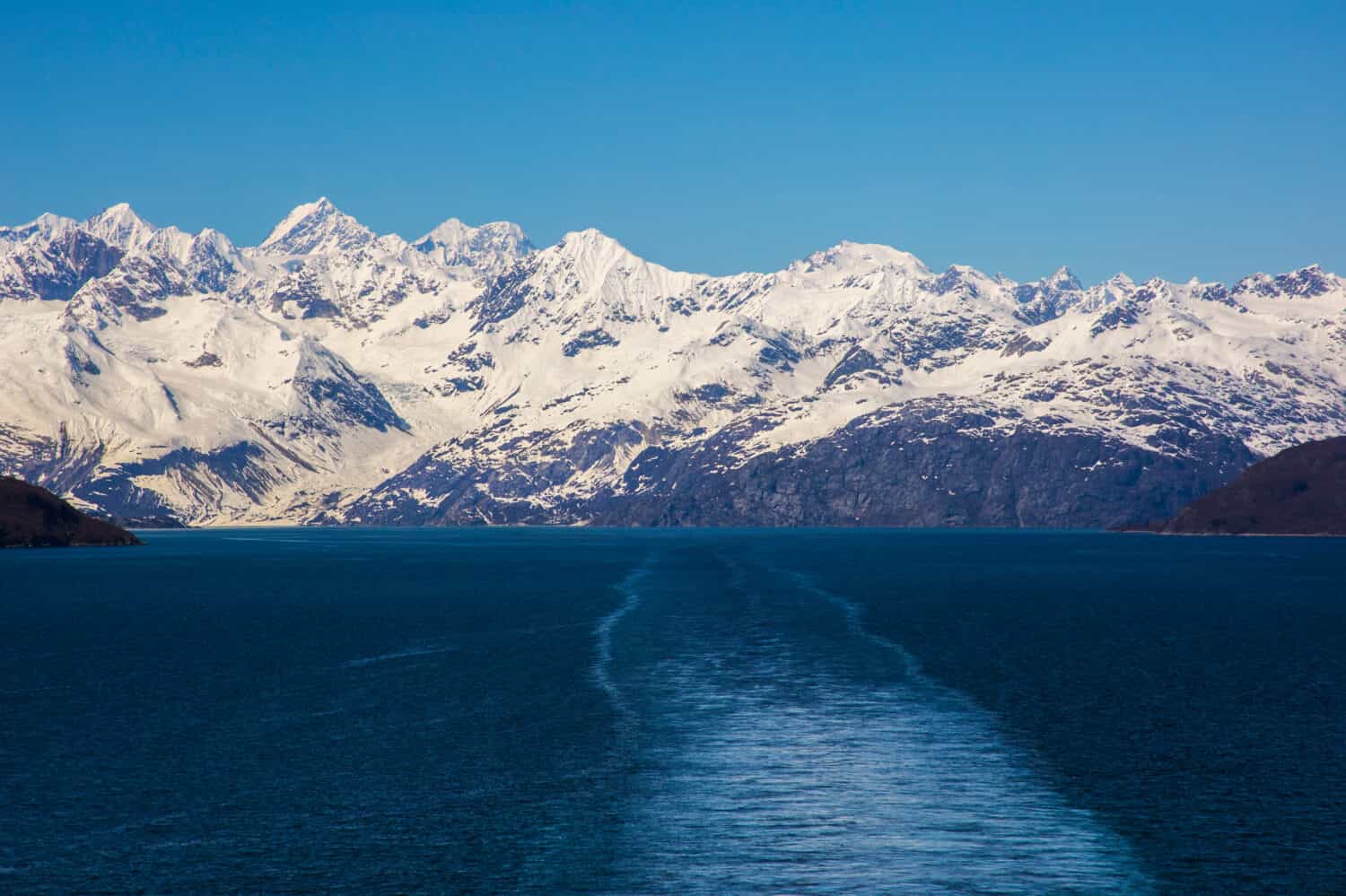Alaska is the largest and widest state in the United States, but it has a sparse population. According to the U.S. Census Bureau, this massive area is only home to 733,583 people. Judging by that population, it’s clear that there are no sprawling, densely packed metropolitan areas in the state. Still, The Last Frontier does have a few cities within its border. Today, we’re going to show you the largest city in Alaska now and in 30 years, showing you the expected growth for this region.
The basis for all the existing population information in this article is the 2020 U.S. Census and the associated 2022 estimated populations issued by the U.S. Census Bureau.
What Is the Largest City in Alaska Now?
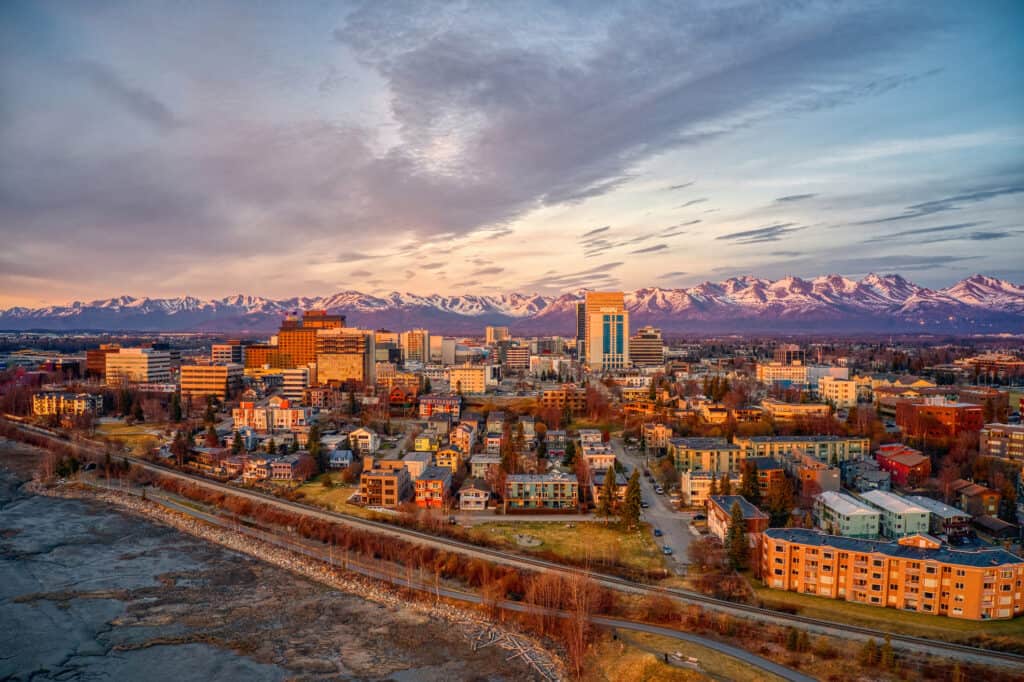
The largest city in Alaska is Anchorage.
©iStock.com/Jacob Boomsma
| City | Population |
|---|---|
| Anchorage | 291,244 |
| Fairbanks | 32,619 |
| Juneau | 32,195 |
| Wasilla | 9,054 |
The largest city in Alaska is Anchorage, a city with a population of 291,244 people in 2020. As the chart above shows, Anchorage is by far the biggest city in the state by population. The next-closest city in terms of population is the capital of Alaska, Juneau.
The population in Anchorage in 2020 was 291,244, but the 2022 estimates for this city’s population show a shrinking population. The information released by the U.S. Census Bureau shows that the population dropped to 287,145 between April 2020 and July 2022. This is equal to a 1.4% decrease in the total population.
As we move forward and discuss the population of the largest city in Alaska in 30 years, the falling population trend will be important.
Where Is Anchorage on a Map?
Anchorage is the largest city in Alaska, and it is in the southern, central portion of the state. Cook Inlet lies to the west of the city, and the Chugach State Park expands to the east.
The city is surrounded by a great deal of water and mountains, providing stunning views for the people who live in the area. The military, oil, and transportation sectors provide many jobs to the people living in this region.
Still, Anchorage is far removed from the supply chain of other major cities. At the very least, the remoteness of the city makes it more difficult for the city to quickly grow.
What Will Be the Largest City in Alaska in 30 Years?
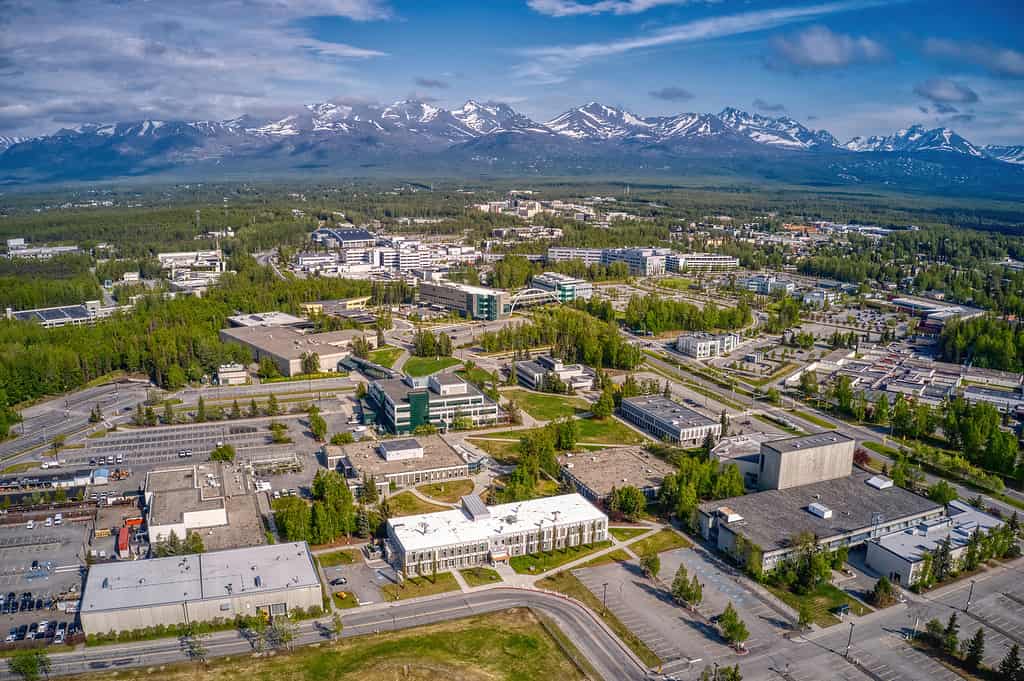
Anchorage will continue to be the biggest city for years to come.
©Jacob Boomsma/iStock via Getty Images
Anchorage will be the largest city in Alaska in 30 years. The reason is simple: no other city can outpace Anchorage’s population. Currently, Anchorage is the largest city, and it has nearly 10 times the population of some of the other cities such as Juneau and Fairbanks. That factor alone ensures that Anchorage will remain the largest city in the state.
So, there can be no doubt that Anchorage will continue to be the largest city in Alaska for the next 30 years. However, that does not necessarily mean that the city’s population is due to increase. Anchorage is just so large already, and no other city in the state is poised to grow by that much.
Yet, the population in Anchorage has dropped in recent years, and it has been rather stagnant over the last decade. Take a closer look at how the population in this region is set to change over the next couple of decades.
Predicting the Population of Anchorage in 2050
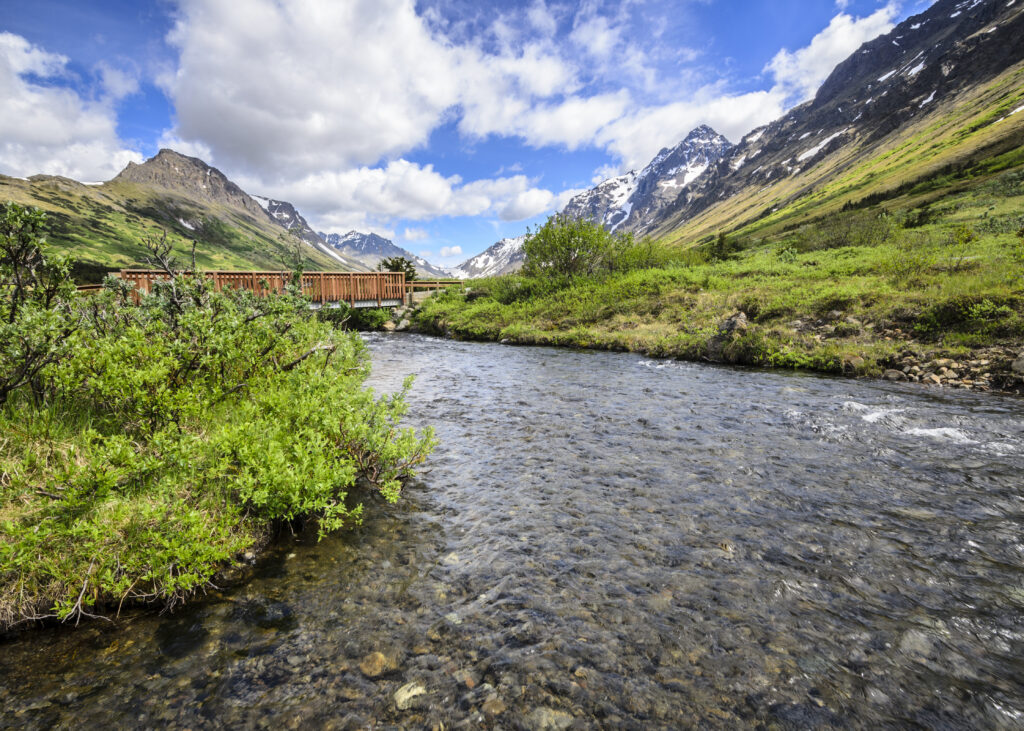
The population in Anchorage has dropped in recent years.
©Susan R. Serna/Shutterstock.com
The 2020 Census found that the population in Anchorage was 291,244. That is a net loss of about 600 people from the 2010 population of 291,826. So, the city has lost some of its population in recent years. Yet, the population loss accelerated in the last two years when the population dipped down to 287,145. At least, those are the estimates for the region issued by the U.S. Census Bureau.
The interesting thing about Anchorage is that it will retain the title of the most populous city in Alaska, but it is projected to lose population. Alaska’s Department of Labor and Workforce Development has released projections for the entire state’s population for the next 30 years.
According to this data, the population in Anchorage is set to suffer a net loss in population by 2050. Anchorage is the largest city in Alaska now and in 30 years, though.
The current projections show that Anchorage will recover its population, reaching almost 291,000 people by 2030. However, the following 20 years will see people leaving this part of the state, dropping the overall population to about 280,000 by 2050.
However, the population in the region of Anchorage is set to increase. More specifically, Alaska groups Anchorage and the Matanuska-Susitna Borough into the Anchorage/Mat-Su Region. The population in the Matanuska-Susitna Borough is set to grow, allowing the population in this area to flourish.
The region’s population is set to grow from 398,000 to 427,000 people by 2050, with all of that growth happening in Matanuska-Susitna Borough. The population change could come from people leaving the Anchorage Municipality or more people moving to the area.
Why Are People Moving to the Anchorage/Mat-Su Region?
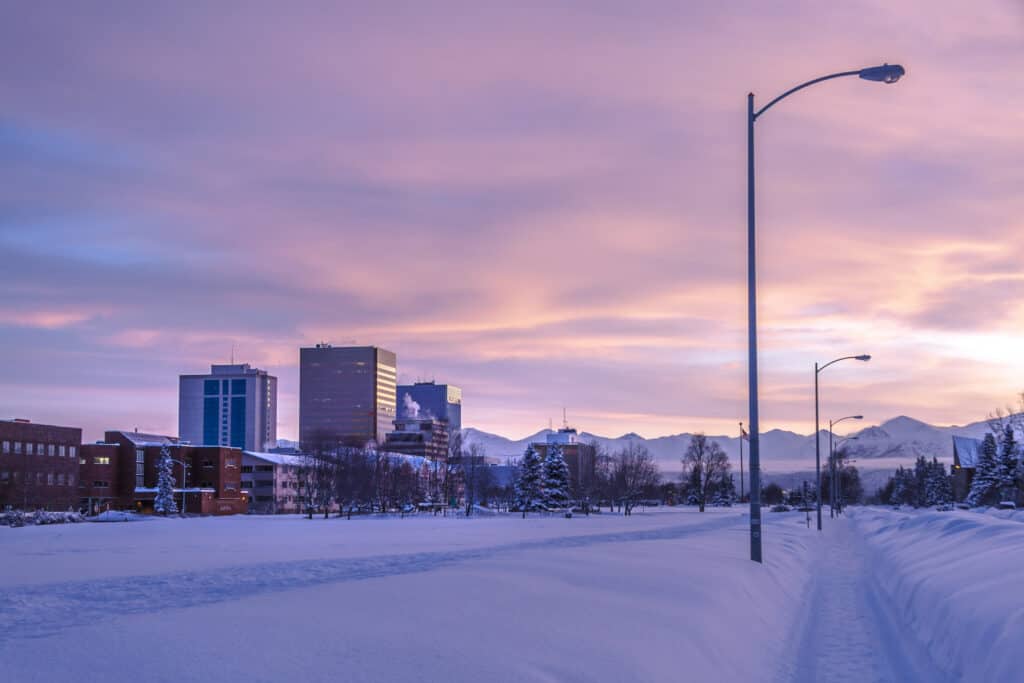
The cities in Alaska are close to the wilderness, an exciting prospect for many people.
©BILD LLC/Shutterstock.com
The population in Anchorage is shrinking due to outmigration. Particularly, working-aged people are leaving this part of the state and moving to other areas of the state or country. Anchorage now has a population in which the yearly losses outpace the births and migration to the area.
Yet, the overall regional population in the area is predicted to rise over the next 30 years. So, why are people moving to the largest city in Alaska and the area around it? Well, Alaska is the Last Frontier, with state and national parks, wildlife, and views that people can’t find anywhere else. Also, the state has no sales or income tax.
The state is not without challenges, though. The housing and jobs market in many parts of the region is in trouble. Also, the people in this region face challenges that come from the long, dark, cold winters in that part of the world.
So, Anchorage is the largest city in Alaska now and in 30 years. The population in the city is set to drop. However, the overall population in the Anchorage/Mat-Su Region is set to grow by a fair amount.
Thank you for reading! Have some feedback for us? Contact the AZ Animals editorial team.

